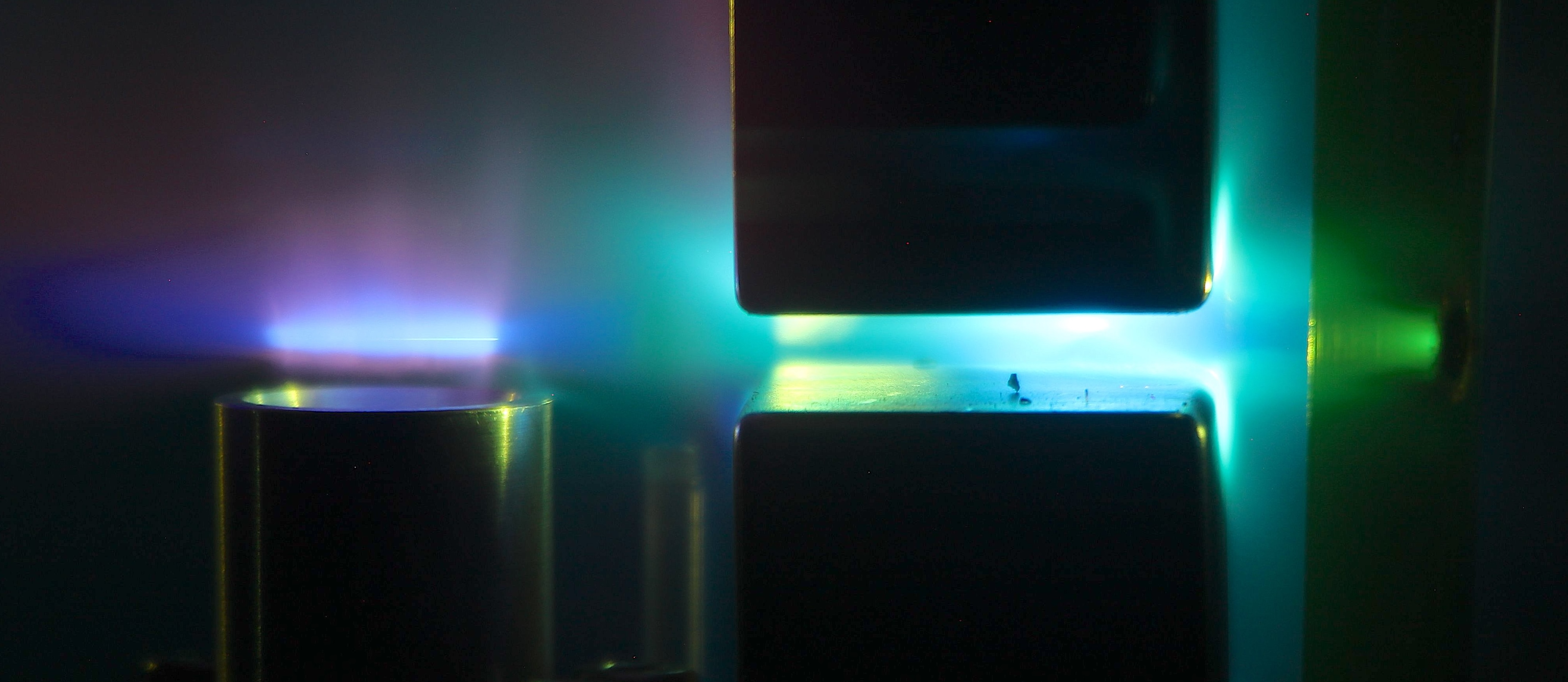Laser wakefield acceleration
Laser Wakefield Acceleration (LWFA) is a promising research area in the fields of plasma physics and particle accelerator science, and is one that has benefited hugely from efforts based at Imperial College.
An electron beam as captured on a magnetic spectrometer (Experiment performed on the Astra laser at the Rutherford Appleton Laboratory)
A high intensity laser, which is focused into a gas plume, can create a plasma wave. The plasma wave is mimicking the mechanisms of electron acceleration and radiation generation that occur in a large conventional accelerator, but rather than doing this on the hundreds of meter scale, it is doing it on the millimeter scale. The plasma wave accelerates electrons in fields that are 100-1000 times stronger than those found in a conventional accelerator. This greatly reduces the size and cost of the accelerator device.
Scientists based here, in the experimental laser-plasma interaction group, helped deliver world-firsts in demonstrating the viability of LWFA and its capability to produce monoenergetic beams of electrons. Experiments continue to take place internationally, and in the UK on the Central Laser Facility at the Rutherford Appleton Laboratory.
Plasma-accelerated electron beams have since been pushed beyond GeV energies, and are observed to produce bright ultra-short bursts of hard X-rays. Recent research has demonstrated their applicability to medical imaging and work is ongoing to demonstrate their applicability to diagnosing rapidly evolving physical phenomena such as shock wave propagation.



